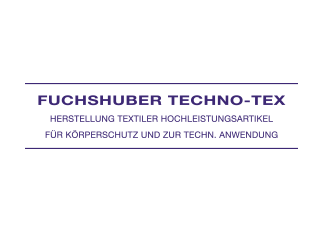Together with Archroma, our global expert partner for textile additives, we were present at this year’s Techtextil in Frankfurt, Germany. Three experts discussed odor management solutions for textiles. Also in focus: the brand-new Sanitized® OX20, an odor-neutralizing product from the Sanitized® Odorex™ product family.
Odor management technologies are evolving from antimicrobials to biocide-free odor adsorbers technology. However, odor adsorbers may not be a suitable replacement for all applications, as the right technology will depend on the intended use, required performance, or local regulatory context.
During a panel discussion at the Archroma booth at Techtextil in Frankfurt, three experts discussed the field of odor management using active and passive systems:
- Stefan Müller, Head of Business Unit Textile Additives at SANITIZED
- Georg Lang, Head of Competence Center Finishing at Archroma
- Yann Ribourdouille, Global registration expert Product Stewardship at Archroma

Podium discussion of Yann Ribourdouille (Archroma), Georg Lang (Archroma), Stefan Müller (SANITIZED) and Nuria Estape (Archroma) at the Archroma booth in Frankfurt.
Stefan Müller, the new biocide-free OX20 is a passive system. Could you explain the main difference in the mode of action of active and passive systems?
There are two ways to reduce or manage odors.
One is the traditional antimicrobials, what we call the “active” approach. This is where the growth of bacteria is prevented or greatly diminished by antimicrobial active substances. No bacteria means no opportunity for bad smells to be generated.
The biocide-free technology, which we call “passive” technology, utilizes odor adsorbers. This technology works by adsorbing the bad odors due to a significantly bigger surface. The odor adsorbers have a certain adsorption capacity. Once this capacity is exhausted, they can be washed and will adsorb bad odors again.
Antimicrobials deal with the reason for or source of bad odors, whereas odor adsorption technologies tackle the symptom.
Their mode of action is obviously different – antimicrobials hinder the growth of bacteria and thereby prevent malodors and other unpleasant smells, whereas odor adsorber technology adsorbs the odors before they are noticeable. As odor adsorbers need to be washed from time to time (to re-load the adsorbing capacity), they are ideal for sporting textiles, etc., which are easy to wash. On the other hand, antimicrobials are to be used for applications with especially high hygiene requirements or items which are difficult to wash, like shoes, various working clothes, or home textile articles.
Stefan Müller, does an odor adsorber technology result in the same effect as an antimicrobial treatment? How do you check the efficacy of both?
Different technologies for different applications require different test setups.
Test methods for active systems – The effectiveness of textiles equipped with active systems can be determined by quantitative antimicrobial standard tests (static contact tests), like ISO 20743, AATCC 100, JIS L 1902. All are based on the same principle and are suitable for non-leaching AM technologies. They also allow measurement against various relevant bacterial species (Gram Neg. and Gram Pos.). The textile samples are inoculated with a bacterial suspension and then incubated. After this contact time, the number of bacteria on the samples is quantitatively determined by plating on nutrient media plates. The difference between the values for treated and untreated textiles shows how many of the bacteria were reduced by the applied active substance. Another test method for the quantitative determination of antibacterial activity of textiles is ASTM E2149. In contrast to the previously mentioned methods, this is a dynamic contact test. This was developed specifically for substrate-bound active ingredients and is particularly recommended for silane-quat technologies.
Passive systems – which, unlike active systems, have no antimicrobial effect but adsorb odors – require a different measurement method. ISO 17299 can be used to determine the odor adsorption capacity of a textile. Specifically, according to ISO 17299-3, a defined amount of isovaleric acid (a typical component of sweat odor) is added to a bottle together with the textile. After an incubation period, an equilibrium is reached between the isovaleric acid adsorbed by the treated textile and the isovaleric acid remaining in the gas phase above the textile. This means that the concentration of the odorant molecule remains constant in both phases. A defined volume of gas is then taken from the gas phase above the textile using a syringe and injected into the gas chromatograph to quantify the amount of isovaleric acid that has not been adsorbed. By comparing this value with the initial concentration added, the odor reduction rate of the treated textile can be determined.
Georg Lang, have you seen an increased demand for odor absorbers technology in the last years?
Yes, there is a strong demand for an odor adsorption effect, mainly in the sportswear area, but also in leisure wear, underwear, and other areas where end consumers face the creation of unpleasant smells.
Of course, there are some markets in which the alternative (odor adsorber) technology is not sufficient to meet the requested performance, for instance mattresses that cannot be washed or end-articles which require a treatment with antimicrobial products to prevent the growth of bacteria, mold and mildew, or fungi.
Yann Ribourdouille, what is the evolution of worldwide biocide regulations?
There is an increasing concern from citizens and authorities about the risks and hazards for health linked to exposure to chemicals. This is especially true for biocides, which by essence trigger effects on living organisms.
Due to that, lot of countries either implemented new regulations or strengthened their biocide regulations with new data requirements, e.g. the duty to inform users about hazards (labeling requirement).
We see this trend in Europe with BPR (2012) or in the US with Federal Insecticide, fungicide, and Rodenticide Act (FIFRA) and all the new local biocide regulations that appear or will come soon like Korea (K-BPR in 2019) and we notice similar movements in India.
Stefan Müller, is there a difference regarding sustainability aspects between active and passive technologies?
As there are different substances used in the active technologies, this can’t be answered in general terms. What can be said, however, is that metal-free technologies most likely win against metal technologies, as the mining of metals is a very energy-rich process. Our actives are applied to textiles in very small amounts and are fixed on the textile so that they can withstand multiple launderings. Therefore, they add comparatively little to the CO2 footprint of a clothing item. They can, however, help consumers tremendously in saving energy, as odor management technologies enable clothing to be worn longer before needing a wash, which results in fewer washings and therefore saved energy, water, and washing liquid.
Yann Ribourdouille, active odor management technologies fight bacteria – how can it be ensured that they don’t inflict harm on the wearer or processor of textiles?
The biocide regulation allows only a selection of well-known chemicals for specified uses. We can therefore ensure that, according to current knowledge, our technologies do not pose a risk to wearers nor to processors if used correctly. Our role is to guide textile manufacturers in the best possible application process to protect the worker and the final user.
Georg Lang, how many wash cycles can these finishes withstand? Is there a difference between active and passive technologies?
We test for 50 home launderings. This is our benchmark for both technologies.
Stefan Müller, can we expect more innovations in the odor management field in the near future?
Our approach is to develop global technologies, but we’re open to solve local market issues as well, like the demand for ammonium adsorber technologies in China.
In China, customers want an odor adsorber, which not only works for IVA (isovaleric acid) but also for NH3 (ammonia). This needs other technologies. Another field we are looking into is the development of natural-based odor adsorber technologies. In this context we’d like to point out that our main focus remains on the reduction of body odors. SANITIZED is a leader in odor-adsorption technology with its Sanitized® Odorex™ product portfolio.
Sanitized® Odorex™ at a glance
Sanitized® Odorex™ technology ensures that odor molecules do not adhere to the textile fibers. Furthermore, Odorex™ adsorbs and neutralizes unpleasant odors as soon as the clothing is worn. The wash-resistant efficacy against sweat odor on sports textiles was proven both in the laboratory and in comprehensive practical tests. Sanitized® Odorex™ meets the guidelines of bluesign® and OEKO-TEX®. The technology complies with all global approval requirements and is not subject to the European Biocidal Products Regulation (BPR).
Archroma at a glance – Because it’s our nature.
Archroma is a global, diversified provider of specialty chemicals serving the branded and performance textiles, packaging and paper, and coatings, adhesives, and sealants markets. Headquartered in Pratteln, Switzerland, Archroma operates in over 100 countries, with 2,800 employees located in 31 countries and with 25 production sites. Archroma is passionate about delivering leading and innovative solutions, enhancing people’s lives and respecting the planet.
archroma.com







